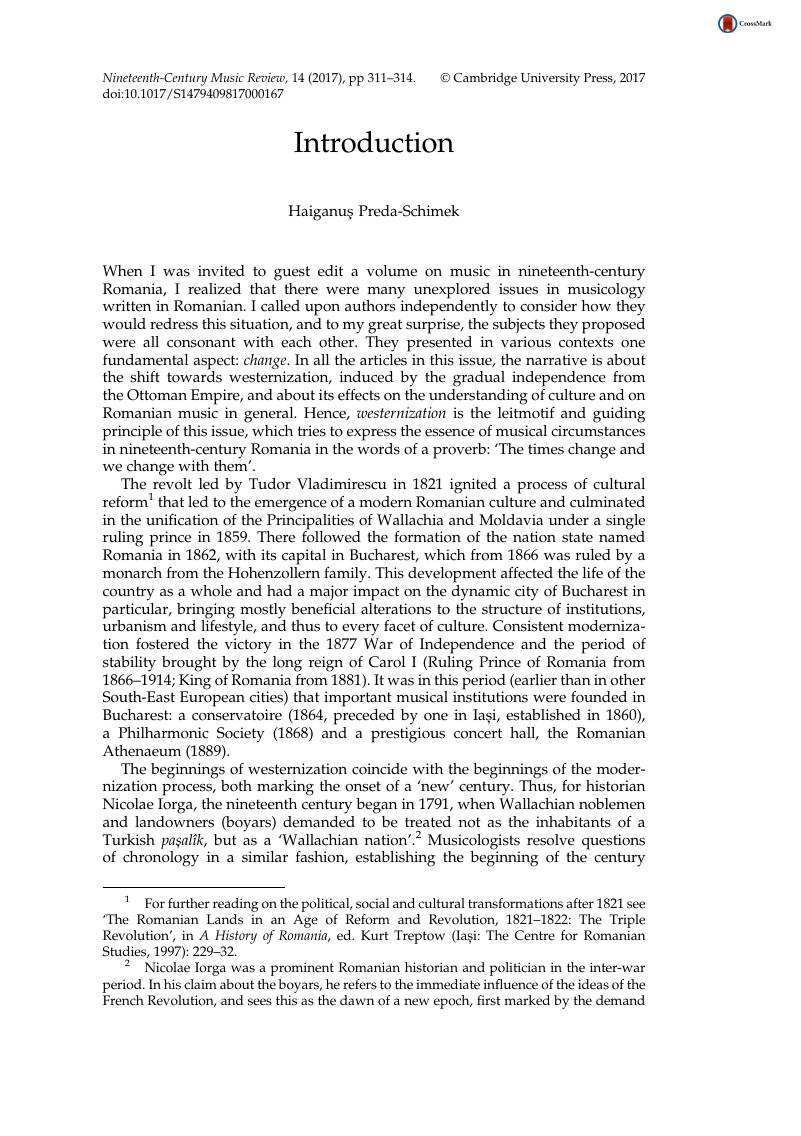No CrossRef data available.
Article contents
Introduction
Published online by Cambridge University Press: 18 December 2017
Abstract

- Type
- Introduction
- Information
- Nineteenth-Century Music Review , Volume 14 , Special Issue 3: Music in Nineteenth-Century Romania , December 2017 , pp. 311 - 314
- Copyright
- © Cambridge University Press 2017
References
1 For further reading on the political, social and cultural transformations after 1821 see ‘The Romanian Lands in an Age of Reform and Revolution, 1821–1822: The Triple Revolution’, in A History of Romania, ed. Kurt Treptow (Iași: The Centre for Romanian Studies, 1997): 229–32.
2 Nicolae Iorga was a prominent Romanian historian and politician in the inter-war period. In his claim about the boyars, he refers to the immediate influence of the ideas of the French Revolution, and sees this as the dawn of a new epoch, first marked by the demand for constitutional law and complaints against Turkish abuses. See Iorga, Nicolae, Istoria românilor prin călători (Bucharest: Editura Eminescu, 1981): 444 Google Scholar.
3 The term ‘feudal’ is used in this context in a slightly pejorative sense, referring to the pre-capitalistic period in Romanian lands, without direct connection to feudalism as medieval form of rule in Western and Central Europe.
4 Ghircoiaşu, Romeo, Cultura muzicală românească în secolele XVIII–XIX (Bucharest: Editura muzicală, 1992): 121 Google Scholar.
5 A European-oriented school of chant was founded within the ‘Philharmonic Society’ in 1834.
6 In Iași a ‘Philo-Dramatic Conservatoire’ was founded in 1836 by Moldavian intellectuals and statesmen Gheorghe Asachi, Vasile Alecsandri and Stefan Catargiu and functioned until 1840.
7 Among prominent non-native families of musicians in Romanian cities were the Wachmann, Wiest, Gebauer, Kratochwil and Caudella families. A more comprehensive list is found in my article in the present volume, at footnote 16.




